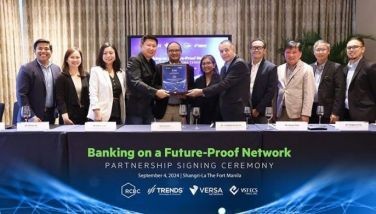Fiestas good promoters of local industries - DOST
MANILA, Philippines - Panagbenga. Pahiyas. Peñafrancia. Moriones. Sinulog. Dinagyang. Kadayawan.
These are among the grand festivals, or fiestas in more popular term, celebrated in various parts of the country at certain times of the year.
Traditionally and culturally, Philippine towns and cities host festivals or fiestas as offering to patron saints for the bounties of harvest and gifts of nature and to celebrate ancient traditions.
Fiestas celebrate life, a thanksgiving for nature’s gifts, the wealth of culture, and serenity of living. Filipinos observe fiestas with sports, street dancing, parades, floats, processions and music.
Although some Filipinos celebrate fiestas with “Bacchanalian abandon,” others do it in the most frugal and modest ways.
Now come studies by the Department of Science and Technology (DOST) that fiesta celebrations can be effective and profitable venues in stimulating the development and growth of local industries.
These celebrations generally showcase local products and opportunities available locally and, therefore, are healthy for the agribusiness, food and tourism sectors managed by micro, small and medium enterprises (MSMEs).
As the Los Baños-based DOST-Philippine Council for Agriculture, Forestry and Natural Resources Research and Development (PCARRD) has asserted: “If only properly utilized, fiestas can be effective venue in showcasing the S&T undertakings of the country’s research and development agencies, particularly in the fields of agriculture, forestry and natural resources.”
PCARRD’s Ricardo Argana wrote: “These initiatives have yielded a wide array of outputs from alternative fuel, food delicacies, processed food products, wines, grains, fruits, vegetables and even furniture and clothes — the components of a true Filipino fiesta celebration.”
PCARRD noted that among the most prominent of Philippine festivities are the Panagbenga in Baguio City, Pahiyas in Quezon, Peñafrancia in Naga City, Moriones in Marinduque, Sinulog in Cebu, Dinagyang in Iloilo and Kadayawan in Davao City.
Others similarly prominent festivities are the Parada ng Lechon in Batangas, Pinyahan Festival in Camarines Norte, Masskara Festival in Bacolod City, Sandugo Festival in Tagbilaran City, Pintados Festival in Tacloban City, Kinabayo Festival in Dapitan City and Hermosa Festival in Zamboanga City.
Inspired by these celebrations and their possible contributions in promoting local enterprises, PCARRD and a private partner, Market Encounter Goes to Manila Foundation Inc. (MEGMA), joined hands to maximize the services of their “Negosyo Bro” to help young businesses find their niche in the market.
“The partnership emphasizes the different types of products and services lines available for entrepreneurs and would-be entrepreneurs,” reported PCARRD’s Hyacinth Tagupa.
One of these is the product industries. This involves manufacturing products either for mass markets or specialized demands.
Another opportunity is in the service industry exemplified by catering in line with the food industry.
The processing industries are also a kind of product/service line, where entrepreneurs deal with specific operations of the manufacturing process.
Still another type is the subcontracting industries, wherein big companies subcontract manufacturing and other operations to smaller companies.
“Negosyo Bro” also stresses the importance of innovation and diversification in business, especially in line with the government’s One Town One Product (OTOP) program.
PCARRD also advised: “The fact that a local festival focuses on one specialty should not limit local entrepreneurs to identical goods. Combining innovation and diversification frees an enterprise from the limitation of OTOP.”
Thus, PCARRD continues to explore linkage between science and technology and fiesta celebrations in attaining progress in the countryside.
- Latest

























